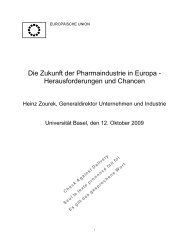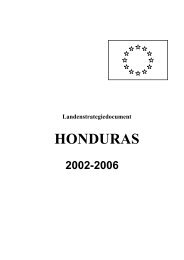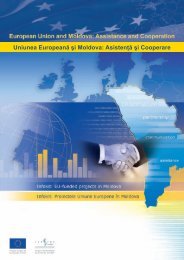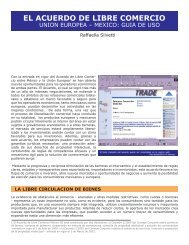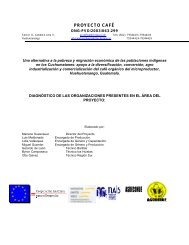RESOURCE COMPETITION IN THE 21ST CENTURY
RESOURCE COMPETITION IN THE 21ST CENTURY
RESOURCE COMPETITION IN THE 21ST CENTURY
You also want an ePaper? Increase the reach of your titles
YUMPU automatically turns print PDFs into web optimized ePapers that Google loves.
the contemporary battlefield. The more developed,urbanised, and prosperous a society,the greater its requirement for all resourcesof all types.The dilemma that confronts us at thedawn of the 21 st century is the fact that humanconsumption of almost all types of materialsis growing at an ever-increasing rate,imposing growing and possibly intolerablepressures on the world’s existing stockpile ofnatural resources. Until now, humans havebeen able to mitigate these pressures by developingnew sources of supply — for example,by digging deeper into the earth formetals and oil — and by inventing alternativematerials. No doubt human ingenuityand the power of the market will continueto generate solutions of this sort. At somepoint, however, the demand for certain vitalresources will simply overwhelm the availablesupply, producing widespread shortagesand driving up the price of what remains; insome cases, moreover, it may prove impossibleto develop viable substitutes. (There isno known substitute, for example, for freshwater). As resource stocks dwindle and pricesrise, the divide between those with accessto adequate supplies and those withoutwill widen, straining the social fabric and insome cases leading to violent conflict. 2Even if disputes over the distributionof resources do not result in violence, thestresses engendered by resource pressureswill affect human society in several ways.For many countries, the tempo of economicgrowth will decline as domestic suppliesof vital materials contract and the price ofimports rises. For those states still in possessionof valuable resources, the impulseto extract and sell as much as possiblewhile prices are high could lead to severeand costly environmental damage. And theentire planet will suffer from the by-productsof unrestrained resource consumption— among them, increased greenhouse-gasemissions, the build-up of toxic wastes, fisheriescollapse, biodiversity loss and severesoil degradation.It is apparent, then, that resource competitionwill play an increasingly significant rolein world affairs as time proceeds. Just howsubstantial its impact will be will depend, toa considerable extent, on the evolution ofhuman consumption patterns. The greaterthe pressure we bring to bear on the world’sexisting resource base, the higher the risk ofmajor social and environmental trauma. It isessential, then, to consider the implicationof five key trends in contemporary humanbehaviour: globalisation, population growth,urbanisation and resource depletion.GlobalisationThe growing internationalisation of finance,manufacturing and trade is havinga powerful effect on many aspects of humanlife, including the demand for and consumptionof basic resources. Globalisationincreases the demand for resources in severalways. Most significant is the spread ofindustrialisation to more and more areas ofthe world, producing a dramatic increase inthe demand for energy, minerals and otherbasic commodities.The spurt in demand for energy is especiallyevident in the newly industrialisedcountries of Asia, which are expected tocontinue growing at a rapid pace in thecoming decades. According to the US Departmentof Energy (DoE), energy consumptionin developing Asia (including China,India, South Korea and Taiwan) will growby an estimated 3.2 per cent per year duringthe first three decades of the 21 st century,producing a net increase in demand ofmore than 215 per cent over this period. Thegrowth in demand for petroleum will be particularpronounced, with total consumptionin developing Asia jumping from 14 millionbarrels per day in 2001 to 30 million barrelsin 2030. 3 A similar pattern is evident withrespect to consumption of natural gas andcoal — both of which are projected to experiencea substantial increase in demand inthis region in the coming decades. The risingconsumption energy, along with other materialsneeded to sustain economic growthin the newly industrialised countries, will2 For discussion, see Thomas Homer-Dixon, ‘Environmental scarcities and violent conflict,’ International Security, vol. 19, no. 1 (summer 1994), p. 5-40.3 US Department of Energy, Energy Information Administration (DoE/EIA), International Energy Outlook 2007 (Washington, D.C.: DoE/EIA, 2007), tables A1 and A5, p. 83, 88.[ 294 ]






